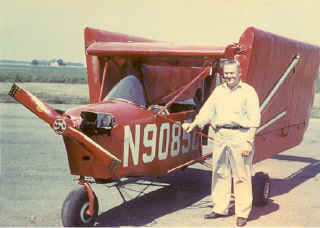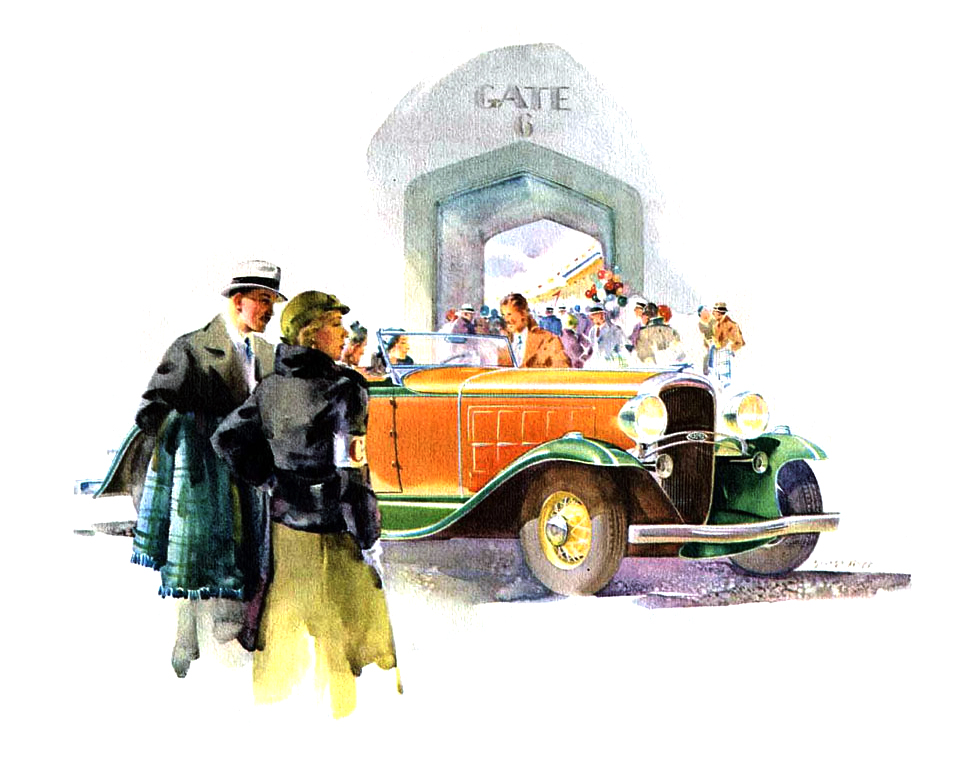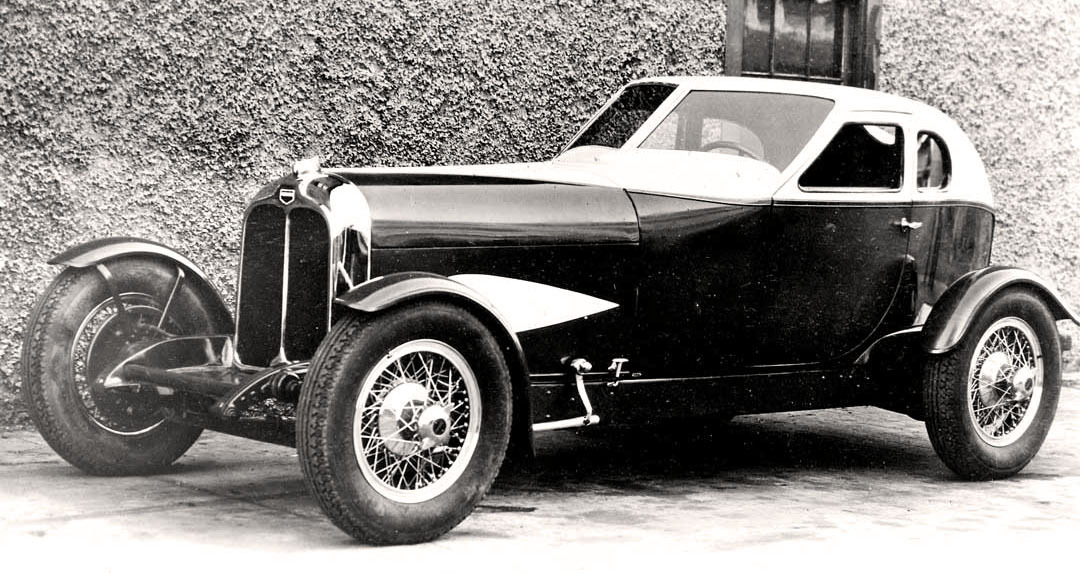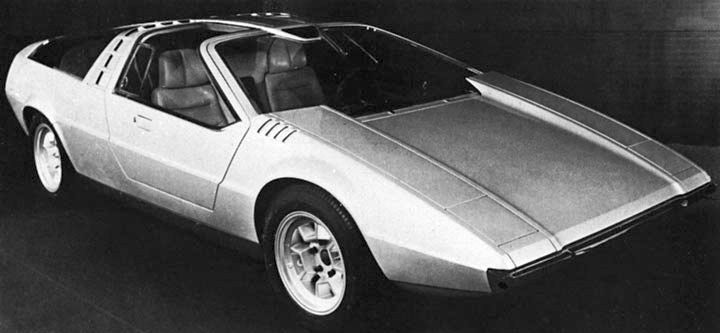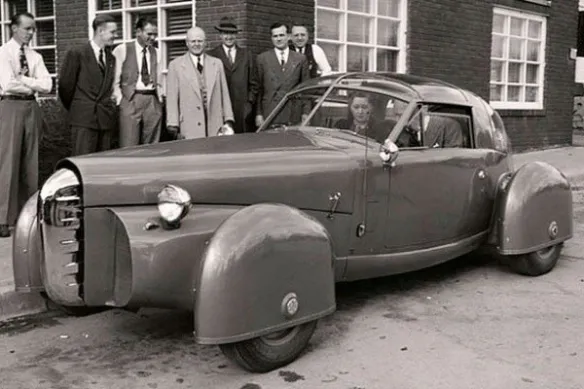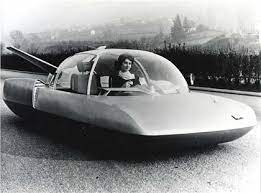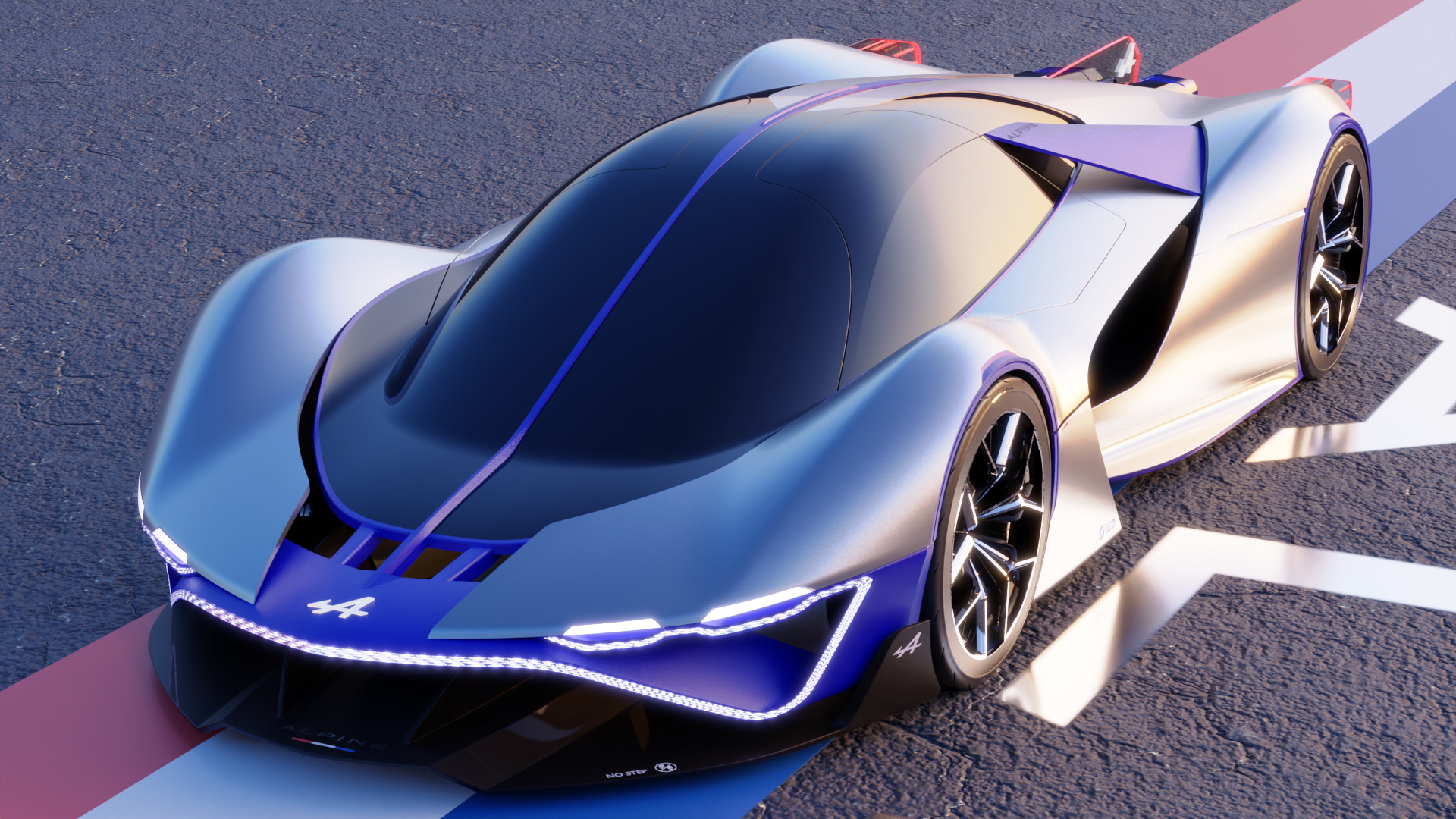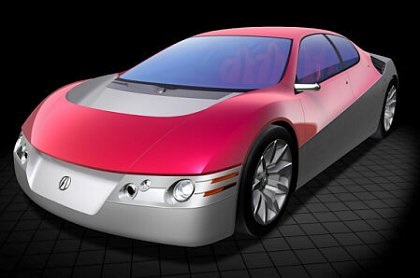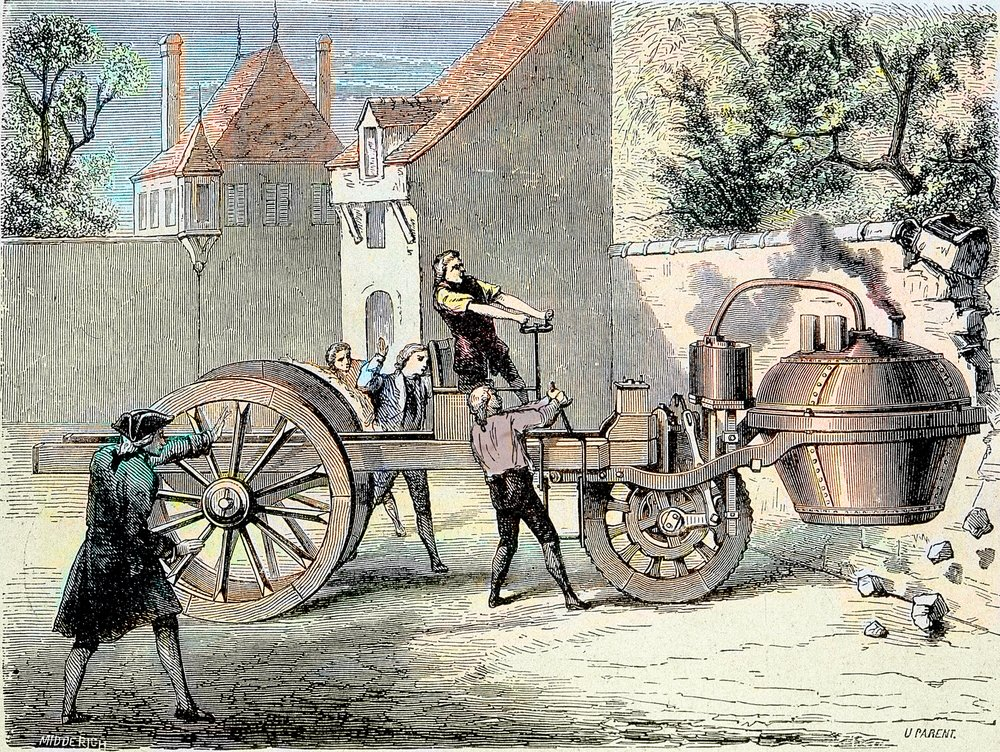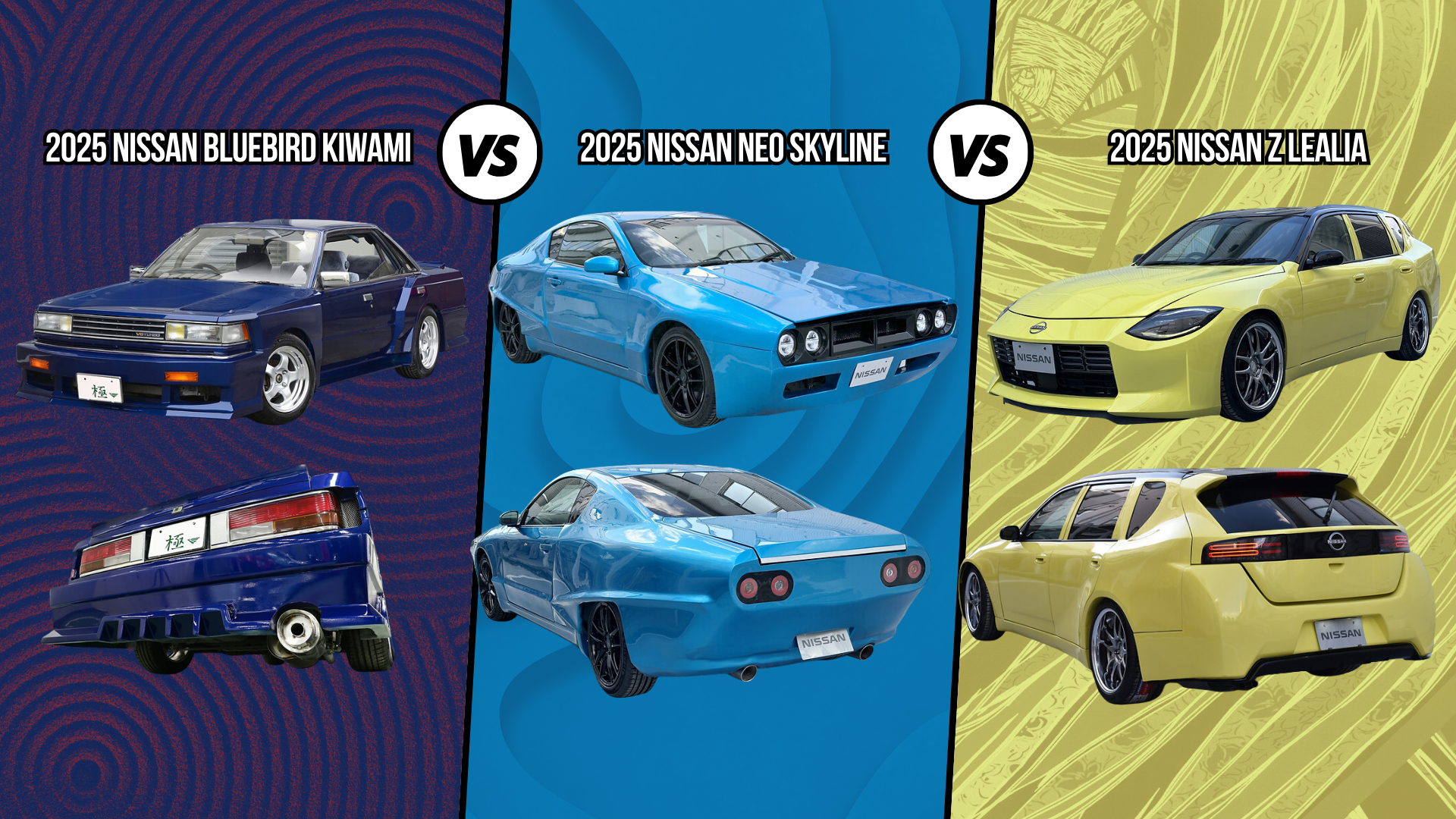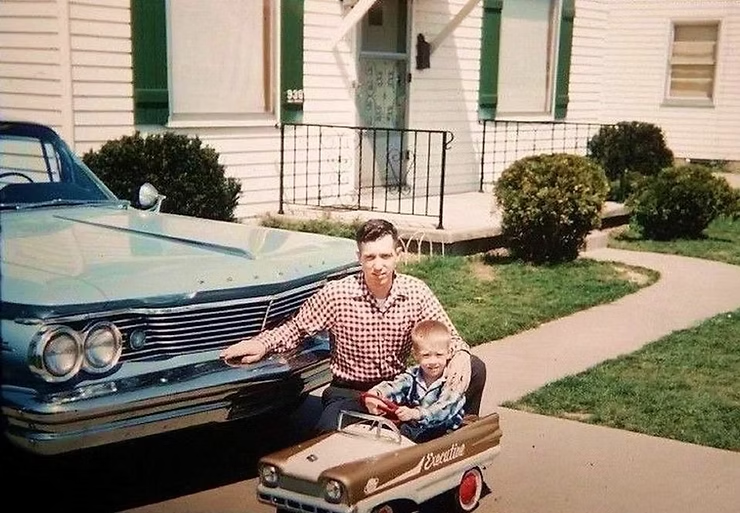World's Largest Flying Car Archive (Part 2 of 3)
- Story Cars
- Nov 15, 2021
- 19 min read
Updated: Nov 4, 2024
A flying car or roadable aircraft is a type of vehicle that can function as both a personal car and an aircraft. The term "flying car" is also sometimes used to include hovercars.
Many prototypes have been built since the early 20th century, using a variety of flight technologies. Although VTOL projects are increasing, most have been designed to take off and land conventionally using a runway. None has yet been built in more than a handful of numbers.
Flying cars are also a popular theme in fantasy and science fiction stories. Futurologists often predict their appearance, and many concept designs have been promoted. But their failure to become a practical reality has led to the catchphrase "Where's my flying car?" as a paradigm for the failure of predicted technologies to appear. For the sake of this article, Story Cars will cover the flying concepts, projects, and prototypes of the 20th and 21st centuries.
Part 2 of 3 includes every 1950-1999 flying car known to the internet and eBooks. Comment below if any are missing from the archive.
Part 1
Part 2
1950 Aircoupe Aut oplane
1953 Bryan Autoplane
1954 Aerocar I N101D
1956 Aerocar I N103D
1958 Ford Volante
1959 Halsmer Aero Car
1959 Piasecki VZ-8 AirGeep
1960 Aerocar I N102D
1960s Aerocar III N4345F
1965 Wagner Aerocar
1966 Aerocar II N107D
1971 AVE Mizar Flying Car
1973 Lebouder Autoplane
1981 AviAuto
1990 Flight Innovations Sky Commuter
Moller Flying M400
Moller Flying 200
Part 3
1950 Aircoupe Autoplane

James W. Holland had a similar idea to René Tampier’s invention. He removed the wings from an Eco Ercoupe monoplane aircraft and used it for city travel, as seen in this photo taken in Valdosta, Georgia, U.S.A., in March 1950. While the history books don’t elaborate on the fate of this project, we can assume that the roadable aircraft didn’t meet American road safety standards.
1953 Bryan Autoplane

Leland Bryan is an American from Milford, Michigan. He built three prototypes of the Bryan Autoplane: the first single-seat prototype was based on the Briegleb BG-6 glider and equipped with an automobile engine. This prototype ran 500 miles (805 kilometers) on the road and successfully took flight in 1953.
The second prototype, a single-seater, was based on an Erco Ercoupe aircraft with a stretched midsection. The engine was positioned in the rear (see photo above). This prototype clocked 80 hours of flight time and covered 4,000 miles (6,427 kilometers) on the ground. Eventually, a flying accident caused major damage to this unit.
When repairing it, Leland Bryan decided to make it into a two-seater. During a flight demo in 1974, the craft lost a poorly secured wing, and Bryan was killed in the accident.
1954 Aerocar I N101D

Greg Herrick's Yellowstone Aviation Inc owns the 1954 N101D. It is maintained in flying condition and is on display at the Golden Wings Flying Museum located on the southwest side of the Anoka County-Blaine Airport in Minneapolis. This aircraft is featured flying overhead on the cover of Jake Schultz's book "A Drive In the Clouds." In December 2011, N101D was being offered for sale at an asking price of USD1.25 million.
1956 Aerocar I N103D

The 1956 N103D has been repainted to red/black with red wings. It has been owned by Carl Felling and Marilyn Stine of Grand Junction, Colorado, since 1981. It once flew Fidel Castro's brother, Raúl Castro, in Cuba. It hit a horse on the runway and damaged the aircraft.
From 1961-1963 the Aerocar was operated under a contract between Star Stations (Don Burden) and Wik's Air Service, Inc. It was used as a traffic-watch (AIRWATCH) aircraft for KISN (910AM) radio station in Portland, Oregon, where it was flown by "Scotty Wright" (Scotty Wright was the alias used by the acting pilot of the Aerocar during traffic-watch transmissions). Several pilots provided the AIRWATCH service beginning with World War II veteran pilot Guilford Wikander, President of Wik's Air Service, Inc. Guilford was followed in order by his sister Ruth Wikander, W. John Jacob III, Wayne Nutsch, and Alan Maris. Scotty Wright reports Nutsch having 350 flying hours in N103D performing AIRWATCH duty. During the Aerocar's AIRWATCH missions, it was painted white with red hearts and had the letters KISN on the top and bottom of the wings.
The aircraft was equipped with an emergency police/fire receiver to report emergency events on KISN radio stations broadcast. When flown for KISN, it was based at Wik's Air Service, Hillsboro Airport (HIO), Hillsboro, Oregon. On one of its more eventful flights for KISN, it survived the Columbus Day Storm of 1962 without damage after its evening traffic reporting flight. Ruth Wikander was piloting the aircraft at that time and is credited with the successful landing during extreme wind conditions (perhaps more than 100 mph). Ruth Wikander was an active member of the 99's, the International Organization of Women Pilots. In 1962 Ruth Wikander drove the Aerocar as an automobile while trailering the wings in the annual Portland Rose Festival parade. The Aerocar was an integral part of KISN Radio and can be seen at stumptownblogger.com, along with photos of famous rock musicians and KISN DJs of the times. Last flown in 1977, the aircraft is no longer airworthy and has been in storage ever since.
1958 Ford Volante

In 1958, Ford built several 3/8-scale concept car models, including the Volante. Looking slightly like an oversized kazoo, it was designed to use three ducted fans, each with its motor, to levitate the vehicle from a parking place into the air.
Perhaps the most unusual of these models was the "Nucleon." While the Nucleon was not intended to be a flying car, it had on its rear deck something that looked like it was off the back of a Lincoln Continental. It was a small nuclear reactor that would power the car through the Atomic Age. This idea was typical of the times. Atomic energy was new to the world in 1945. For almost twenty years, engineers envisioned this new form of power as readily useable by the public, just like ordinary electric power. Various large corporations scrambled to get in on the action and formed subsidiaries to experiment with atomic power. Three Mile Island and Chernobyl had not yet demonstrated the limitations of this new source of energy. Undoubtedly, the designers of the Volante thought that it too might be powered by an atomic energy-driven motor.
1959 Halsmer Aero Car
The Halsmer Aero Car [N9085C] was built in 1959 by Joseph L. Halsmer of Lafayette, Indiana, was one of the numerous attempts at building a roadable aircraft (and it is quite remarkable that this Seaboard World Airlines captain and father of 11 children could find any time at all to get this airplane built and flown!)
The Aero Car was a high-wing monoplane with two engines in a tractor-pusher configuration, a tricycle gear, and tail booms. Halsmer built this machine over two years and later converted it into the single-engine pusher Aero Car 3 presented in 1963 , powered by a Continental C-85-12 engine.
Halsmer also built a high-wing two-seater [N12043] (possibly the Aero Car 2) with a uni-twin arrangement of two 65 hp engines driving two counter-rotating props.
1959 Piasecki VZ-8 Airgeep

The Piasecki VZ-8 Airgeep (company designation PA-59) was a prototype vertical takeoff and landing (VTOL) aircraft developed by Piasecki Aircraft. The Airgeep was developed to fulfill a U.S. Army Transportation Research Command contract for a flying jeep in 1957. The flying jeep was envisioned to be smaller and easier to fly than a helicopter.
Piasecki AIRGEEP II (Army) during its first flight, 15 February 1962.
To meet the U.S. Army's requirement, Piasecki's design featured two tandem, three-blade ducted rotors, with the crew of two seated between the two rotors. Power was by two 180 hp (134.2 kW) Lycoming O-360-A2A piston engines, driving the rotors by a central gearbox. The first of two aircraft ordered by the Army, initially designated the Model 59K Skycar (and later renamed Airgeep) by Piasecki and designated VZ-8P by the Army, flew on 22 September 1958.
It was re-engined with a single 425 hp (317 kW) Turbomeca Artouste IIB turboshaft replacing the two piston engines, flying in this form in June 1959. After being loaned to the U.S. Navy for evaluation as the Model 59N, fitted with floats, it was returned to the Army and its engine replaced by a lighter and more powerful 550 hp (410.1 kW) Garrett AiResearch TPE331-6 engine.
The second prototype was completed to a modified design, designated Model 59H AirGeep II by Piasecki and VZ-8P (B) by the Army. It was powered by two Artouste engines, with ejection seats for the pilot and co-pilot/gunner and a further three seats for passengers. It was also fitted with a powered tricycle undercarriage to increase mobility on land.
The AirGeep IIs first flight occurred on 15 February 1962, piloted by "Tommy" Atkins.
While the Airgeep would typically operate close to the ground, it could fly to several thousand feet, proving to be stable in flight. Flying low allowed it to evade detection by radar. Despite these qualities, and its superiority over the other two types evaluated by the U.S. Army to meet the same requirement (the Chrysler VZ-6 and the Curtiss-Wright VZ-7), the Army decided that the "Flying Jeep concept [was] unsuitable for the modern battlefield," and concentrated on the development of conventional helicopters instead.
Variants
Model 59K Skycar: Company designation for the first aircraft powered by two 180 hp (134.2 kW)) Lycoming O-360-A2A piston engines, given the military designation VZ-8P Airgeep. Later, the piston engines were replaced by a single 425 hp (316.9 kW)) Turbomeca Artouste IIB turboshaft engine.
Model 59N SeaGeep I: The first aircraft (after a single Artouste replaced the piston engines) was fitted with floats while on loan to the United States Navy.
PA-59H AirGeep II: The second aircraft, military designation VZ-8P (B), completed with two 400 hp (298.3 kW)) Turbomeca Artouste IIC turboshaft engines and seats for up to five, including the crew.
VZ-8P Airgeep I: The military designation of the first aircraft as delivered
VZ-8P-1 Airgeep I: After the piston engines were replaced by a single 425 hp (316.9 kW) Turbomeca Artouste IIB.
VZ-8P-2 Airgeep I: The first aircraft after the Artouste engine was replaced by a lighter and more powerful 550 hp (410.1 kW)) Garrett AiResearch TPE331-6 engine.
VZ-8P (B) Airgeep II: The military designation of the second aircraft.
1960 Aerocar I N102D

The 1960 N102D is yellow and green. The last Aerocar built and the only one still flying, it is owned by Ed Sweeney and is on display at the Kissimmee Air Museum located at the Kissimmee Gateway Airport in Kissimmee, Florida. N102D was the only Aerocar built with the larger O-360 Lycoming powerplant giving it much better performance. It is the only road legal and driven Aerocar left. It is currently flown by the owner's son Sean Sweeney. It was previously owned by actor Bob Cummings, who used it in his TV sitcom The New Bob Cummings Show. It also appeared on James May's Big Ideas TV show on BBC2, aired in September 2008. Inspired by this vehicle, Ed Sweeney is currently developing the Aerocar 2000 via his Aerocar firm.
1960s Aerocar III N4345F

The sixth Aerocar (N4345F) from the 1960s, Moulton Taylor's final flying car effort, is red with silver wings. It began as one of the original Aerocars, which Taylor bought back from a customer when it was damaged in an accident on the ground in the 1960s. Taylor rebuilt it as the Aerocar III, replacing the original cabin with a sleeker, more streamlined front-wheel-drive version (although it still "fell far short" of the sporty lines Taylor wanted to give it). The automotive unit weighs 1,100 lbs and is powered by a 140 hp Lycoming O-320. The trailer wheels for the wings in a towed configuration are deployable from a compartment on the outside of each wing's leading edge. The propeller driveshaft contains fine ball bearings that swing outward with centrifugal force, creating stiffness and dampening. The four retractable wheels are extended for takeoff and landing, partly retracted for road travel, and fully retracted in flight. Taylor attracted some interest from Ford in the Aerocar III, but no production resulted. The single prototype is displayed at Seattle's Museum of Flight with the registration N100D.
1965 Wagner Aerocar

The Wagner FJ-V3 Aerocar was a prototype 4-place flying automobile. The vehicle used counter-rotating rotor helicopter technology for flight.
The Aerocar was developed in the era of space-age futurism and looked the part. It looked slightly like the Jetsons flying car, with a large bubble cockpit, tailfins, and disproportionately small wheels for a car. It was developed from the Rotocar III design, which was based on the Sky-trac 3 helicopter. The helicopter used counter-rotating rotors. On-ground propulsion to the wheels was through a hydraulic linkage to the engine.
The Franklin 6AS-335-B engine replaced a 134lb, 420shp Turbomeca Oredon turbine engine with a front-mounted gearbox. The design was sold to Helikopter Technik München (HTM). A prototype with the registration D-HAGU was completed and flown in 1965. HTM suspended the development of the Aerocar in 1971.
Variants
HTM Skytrac
1966 Aerocar II N107D
[Still need photo]
The 1966 N107D is an Aerocar Aero-Plane, or Aerocar II. It is not a roadable aircraft but is based on the original Aerocar design. It uses the wing and tail section from the Aerocar. It seats four and is powered by a 150 hp IO-320 Lycoming engine. Only a single example was built. It is presently located in Colorado Springs, Colorado, owned by Ed Sweeney, owner of N102D.
1971 AVE Mizar Flying Car

The AVE Mizar (named after the star Mizar) was a roadable aircraft built between 1971 and 1973 by Advanced Vehicle Engineers (AVE) of Van Nuys, Los Angeles, California. The company was started by Henry Smolinski and Harold Blake, both graduates of Northrop Institute of Technology's aeronautical engineering school.
The prototypes of the Mizar were made by mating the rear portion of a Cessna Skymaster to a Ford Pinto. The pod-and-twin-boom configuration of the Skymaster was a convenient starting point for a hybrid automobile/airplane. The passenger space and front engine of the Skymaster were removed, leaving an airframe ready to attach to a small car. AVE planned to have its airframe purpose-built by a subcontractor for production models, rather than depending on Cessna for airframes.
By mid-1973, two prototypes had been built, and three more were under construction. One prototype was slated for static display at a Van Nuys Ford dealership, owned by AVE partner Bert Boeckmann. The other prototype, fitted with a Teledyne Continental Motors 210 horsepower (160 kW) engine, was unveiled to the press on May 8, 1973. Petersen Publishing photographer Mike Brenner photographed both vehicles for Hot Rod magazine in late April. It then began a series of taxi tests at Van Nuys Airport. AVE made special arrangements to do flight testing at the U.S. Navy's test facilities at Naval Air Station Point Mugu, California. AVE stated that Federal Aviation Administration certification flights were underway in mid-1973.
The Mizar was intended to use both the aircraft engine and the car engine for takeoff. This would considerably shorten the takeoff roll. Once in the air, the car engine would be turned off. Upon landing, the four-wheel braking would stop the craft in 525 ft (160 m) or less. Telescoping wing supports would be extended on the ground, and the airframe would be tied down like any other aircraft. The Pinto could be quickly unbolted from the airframe and driven away.
Production was scheduled to begin in 1974. AVE had stated that prices would range from US$18,300 to $29,000.
On a test flight from Camarillo Airport in California on August 26, 1973, according to test pilot Charles "Red" Janisse, the right-wing strut base mounting attachment failed soon after takeoff. Because turning the aircraft would put too much stress on the unsupported wing, Janisse put the aircraft down in a bean field. After the roadway was closed to traffic, Janisse drove the otherwise undamaged aircraft back to the airport.
On September 11, 1973, during a test flight at Camarillo, the right-wing strut again detached from the Pinto. With Janisse not available for this test flight, Mizar creator Smolinski was at the controls. Although some reports say the Pinto separated from the airframe, air traffic controller Reed Weske who was watching through binoculars, said the aircraft disintegrated after taking off and making a right turn. According to Janisse, the wing folded because the pilot tried to turn the aircraft when the wing strut support failed. Smolinski and the Vice President of AVE, Harold Blake, were killed in the resulting crash.
Even though the Pinto was a light car, the total aircraft without passengers or fuel was already slightly over the certified gross weight of a Skymaster. However, in addition to poor aircraft design and loose parts, the National Transportation Safety Board reported that bad welds were partly responsible for the crash, with the right-wing strut attachment failing at a body panel of the Pinto.
1973 Lebouder Autoplane

The Lebouder Autoplane was a French amateur-built modular roadable aircraft with a car-like component separated from its aeronautical parts. The sole Autoplane flew and drove successfully in the early 1970s.
The two-seat Autoplane appeared to be a conventional, single-engined, high-wing braced monoplane with a fixed tailwheel undercarriage from a distance or in flight. On the ground, the front part of the fuselage was seen to be a seriously modified Vespa 400 micro-car, a common, small, four-wheeled, open top two-seater powered by a 13 kW (18 hp) motorcycle engine. For road use, this had lights and direction indicators mounted on a nose grille, a forward bumper, and, inside, a standard steering wheel but also a set of flight instruments and engine controls. The Autoplane's roadable component also had the aircraft's 75 kW (100 hp) Continental air-cooled flat-four under the bonnet and the original engine that powered it on the road at up to 70 km/h (43 mph).
The Autoplane had a rectangular plan wing. Its rear fuselage, open at the front until the car/forward fuselage was inserted, was attached to the wing underside from about half chord and tapered rearwards to a conventional tail with a triangular dorsal fillet leading to a large rectangular fin and rudder. The horizontal tail, also rectangular in plan, was attached to the fuselage bottom.
Joining these two parts into an aircraft took two people a little over half an hour. The steering wheel stowed in the car and the bumper in the rear fuselage, then the car was backed into the fuselage opening and linked to the wings by attaching on each side a single lift strut to a bracket on the lower car body. This positioned the windscreen at the wing leading edge, and the side windows enclosed the cabin. Entry was via standard car-type, forward-hinged doors. Removing the grille revealed a propeller boss, and the propeller was bolted on. The Vespa 400 had been modified so that the front wheels could be swung downward and forward on V struts, forming the Autoplanes's narrow track main undercarriage. Its rear suspension was also modified to allow the wheels to be retracted upwards into the body. After a flight, this procedure was reversed, releasing the car to the road.
The date of the first flight is uncertain, but it was before 13 July 1973 when the Autoplane received its Certificate of Airworthiness. Later in 1973, it appeared at two RSA meetings, at Montdidier and Montargis, winning four prizes. Lebouder flew it until it was damaged in an accident in 1975. The damage was chiefly confined to the undercarriage and propeller, but the Autoplane never flew again, though the road vehicle survived.
1981 AviAuto
[Still need photo]
The 1981 AviAuto project was designed by Harvey Miller. Lots of information is still needed on this flying car project.
1990 Flight Innovations Sky Commuter
The 1990 Sky Commuter, a flying car concept from a long-dead flop of a company that, like so many others, dreamed of sending ill-equipped and easily-distracted American drivers hurtling across the ether. Sadly, it's not a working prototype. Noted flying car truther Matt Novak at Paleofuture digs into the star-crossed history of Sky Innovations, the Washington state dream team of former Boeing employees who banded together in the late 1980s in hopes of sending commuters skyward.
Sky Innovations was full of promise, tempting investors with the dream of an 85 MPH cruiser with a 225-mile range. Landing strips? Forget them–the Sky Commuter was a vertical-takeoff-and-landing (VTOL) machine. If that sounds too good to be true, you probably won't be surprised to find out that it was all a big flop. Over at Paleofuture, Matt Novak explains that, while Sky Innovations claimed to have successfully test-flown some prototype vehicles, it's impossible to find photo or video evidence of such an event. The company burned through $6 million in investor money, built three prototypes, and folded–leaving around 60 angry investors and the unfulfilled dream of flying cars behind.
The example on offer by Barrett-Jackson is the only surviving product of Sky Innovations' Icarus-like short life. When it was last on sale in 2008, it went for $130,000 on eBay. When it hits the block at Scottsdale this weekend, it'll do so with no reserve–and no engine: while the design called for a gas turbine to power the twin VTOL fans in flight and drive the car with exhaust thrust on land, this prototype only carries a simulated fan array in its engine compartment.
Moller M400 Skycar

The Moller Skycar is a prototype personal VTOL (vertical takeoff and landing) aircraft – a "the flying car" – a concept invented by Paul Moller. He has been attempting to develop such a vehicle type for more than fifty years. After four decades of failed attempts, as of 2019, no Moller air vehicle has flown in free, non-tethered flight, a condition imposed by FAA for testing his concept.
The parent company, Moller International, has been dormant since 2015.
The M400 craft, previously under development, is purported to transport four people ultimately; single-seat up to six-seat variations are also planned. It is described as a car since it is a popular means of transport for anyone who can drive, incorporating automated flight controls, with the driver only inputting direction and speed required.
After forty years and $100,000,000 in expenditure, the Skycar demonstrated tethered hovering capability in 2003. It has been extensively marketed for pre-order sales since the 1990s as Moller attempted to raise more money for development.
In April 2009, the National Post characterized the Moller M400 Skycar as a "failure" and described the Moller company as "no longer believable enough to gain investors." On May 18, 2009, Paul Moller filed for personal protection under the Chapter 11 reorganization provisions of the federal bankruptcy law. It is unknown how this will impact the fate of his ideas; Moller International itself did not file for bankruptcy but reduced operations.
As explained in a Freedom Motors newsletter from August 2019, Moller International has been dormant since 2015. Shares of Moller International were revoked by the SEC in September 2019. A Skycar is not piloted like a traditional fixed-wing airplane and has limited pilot controls, which the pilot uses to inform the computer control system of the desired flight maneuvers. The Skycar's ducted fans deflect air vertically for takeoff and horizontally for forwarding flight. The ducted fans encase the propellers and engines, preventing bystanders from being exposed to moving blades, improving aerodynamic efficiency at low speeds, and generating lift in forwarding flight. The engines to be used are being developed by an affiliate Moller company called Freedom Motors. They are Wankel engines branded "Rotapower," which have a direct drive to a propulsion fan. Each fan is contained in Kevlar-lined housings, which provide further protection for bystanders. The Skycar has four nacelles, each with two computer-controlled Rotapower engines. All eight engines operate independently and, as demonstrated during a tethered flight, allow for a vertical controlled landing should anyone fail.
The Rotapower Wankel engine announced by Freedom Motors has the claimed ability to operate on any fuel, including, but not limited to, gasoline, diesel, methanol, and clean, renewable ethanol. Earlier Rotapower models used gasoline. The Rotapower engine is based on a rotary engine developed by Outboard Marine Corporation (OMC) in the 1970s.
On November 1, 2013, Moller announced that the 530 cc Rotapower engine had achieved 102 horsepower (76 kW) using alcohol (ethanol) on their test stand, yielding an effective three horsepower per pound (5 kW/kg) of weight.
Despite announcements since 2001, the Rotapower engine has never been mass-produced. As of 2015, Moller claims to have a backlog of conditional orders and letters of intent for over 3.5 million Rotapower engines.
Variants
Moller M150 Skycar: The initial single-seat technology demonstrator incorporates a Bede BD-5 with two of Moller's ducted fan units. Prototype only; no public demonstration flights.
Moller M400 Skycar: The prototype version powered by four Moller propulsors incorporating Rotapower 500 Wankel rotary engines; has flown several times without a pilot but tethered via slack safety line to an overhead crane.
Moller 400 Skycar: Production version; unbuilt.
Moller 100LS and 200LS: Proposed 1-and-2 seat volantor air vehicles, similar to the 400 Skycar
Neuera: A two-seater, round, flying saucer-like aircraft that uses 8 Rotapower rotary engines.
Firefly: Designed as a high-rise rescue vehicle that would carry up to 3 passengers and one operator.
Moller M200G Volantor

The M200G Volantor is a prototype of a flying saucer-style hovercraft designed by aeronautics engineer Paul Moller. The vehicle is envisioned as a precursor to the Moller M400 Skycar. The M200G Volantor uses a system of eight computer-controlled fans to hover up to 10 feet (3 m) above the ground. Volantor is a term coined by Moller, meaning "a vertical takeoff and landing aircraft."
The M200G Neuera is a circular craft with seats in the middle for two passengers and a control panel. The vehicle is 3 feet (0.9 meters) tall and 10 feet (3 meters) in diameter. Eight Wankel rotary engines power eight enclosed fans. The fans allow for vertical takeoff and landing and, once the vehicle is aloft, rely upon the ground effect to create a cushion of air that the vehicle sits upon while flying. The eight separate engines exist for redundancy, allowing the craft to continue flying if one engine goes out. If two engines go out, the craft will make a "survivable hard landing." The engines can be powered with gasoline, diesel, or ethanol fuels.
The computer system monitors stability, and the vehicle has only two controls, one for speed and direction and the other for altitude. The computer system also prevents the machine from flying higher than 10 feet (3 m) above the ground. Per Federal Aviation Administration regulations, any vehicle which flies above 10 feet is regulated as an aircraft. The M200G Neuera is expected to travel over any terrain at speeds up to 50 mph (80 km/h).
Moller and his team claim that over 200 test flights of the M200G Neuera have already been conducted. However, these flights rely on ground effect and do not necessarily suggest significant movement toward the goals set forth for the flagship model, the Skycar M400. Moller had predicted they would have the M200G ready for sale by early 2008 with a goal of 250 units produced in the year, but this did not occur. Depending upon demand, the M200G could cost under US$100,000, according to the company. As of August 2007, Moller had not yet established if the vehicle would be regulated by the United States Federal Aviation Administration or the Department of Transportation. Moller International has a long record of making promises that are not fulfilled, which generates skepticism about its claims.
In a 2005 episode of the Discovery Channel television show MythBusters, more than US$200 million had gone into the development of the Skycar. Moller has been claiming to be attempting to build a flying car since 1974, constantly promising delivery dates that are just "around the corner." Still, the closest Moller has come to producing a vehicle that flies is the M200G Neuera, which has been demonstrated to hover outside of the ground effect. He has not produced any evidence or figures to support the promised abilities, such as fuel economy equivalent to that of an automobile; indeed, each proposed model would use eight less fuel-efficient but very good weight to power ratio Wankel engines, each of which must maintain high RPMs even when idle. The only demonstration approaching flight was a "hover" test performed by a Skycar prototype tethered, not hung, to a crane, which Moller claimed was "for insurance purposes." Each time the deadline approaches, Moller has postponed it. For example, since 2003, when he started taking presale deposits for the flagship model M400, the date for FAA certification promised to investors and buyers has been moved forward one year each year, and lastly stood at December 31, 2008. In 2003, the Securities and Exchange Commission sued Moller for civil fraud (Securities And Exchange Commission v. Moller International, Inc., and Paul S. Moller, Defendants) in connection with the sale of unregistered stock and making unsubstantiated claims about the performance of the company's flagship M400 Skycar. Moller settled this lawsuit by agreeing to a permanent injunction and paying $50,000. In the words of the SEC complaint, "As of late 2002, MI's approximately 40 years of development has resulted in a prototype Skycar capable of hovering about fifteen feet [4.5 m] above the ground."
Variants
M200X: Effectively the prototype of the Flying saucer-like Volantor and Neuera. Moller claims a performance of 100 mph (160 km/h), 900 miles (1,450 km) range, eight low-emissions Wankel engines that run on a 70% (bio)ethanol and 30% water mixture; earlier models ran on gasoline. The ethanol/water fuel mixture reduces fire hazards, as it does not easily burn outside the engines. The water cools the engines from within, and the engines can use higher compression ratios and make more power than with 100% ethanol. Because of the mixture, the engine fulfills California SULEV requirements.
M200G Volantor: A proposed production version of the M200.
M200G Neuera: The latest incarnation of the M200 is reputed to be certified for flight above the FAA 10 foot altitude restriction.
Sources:





